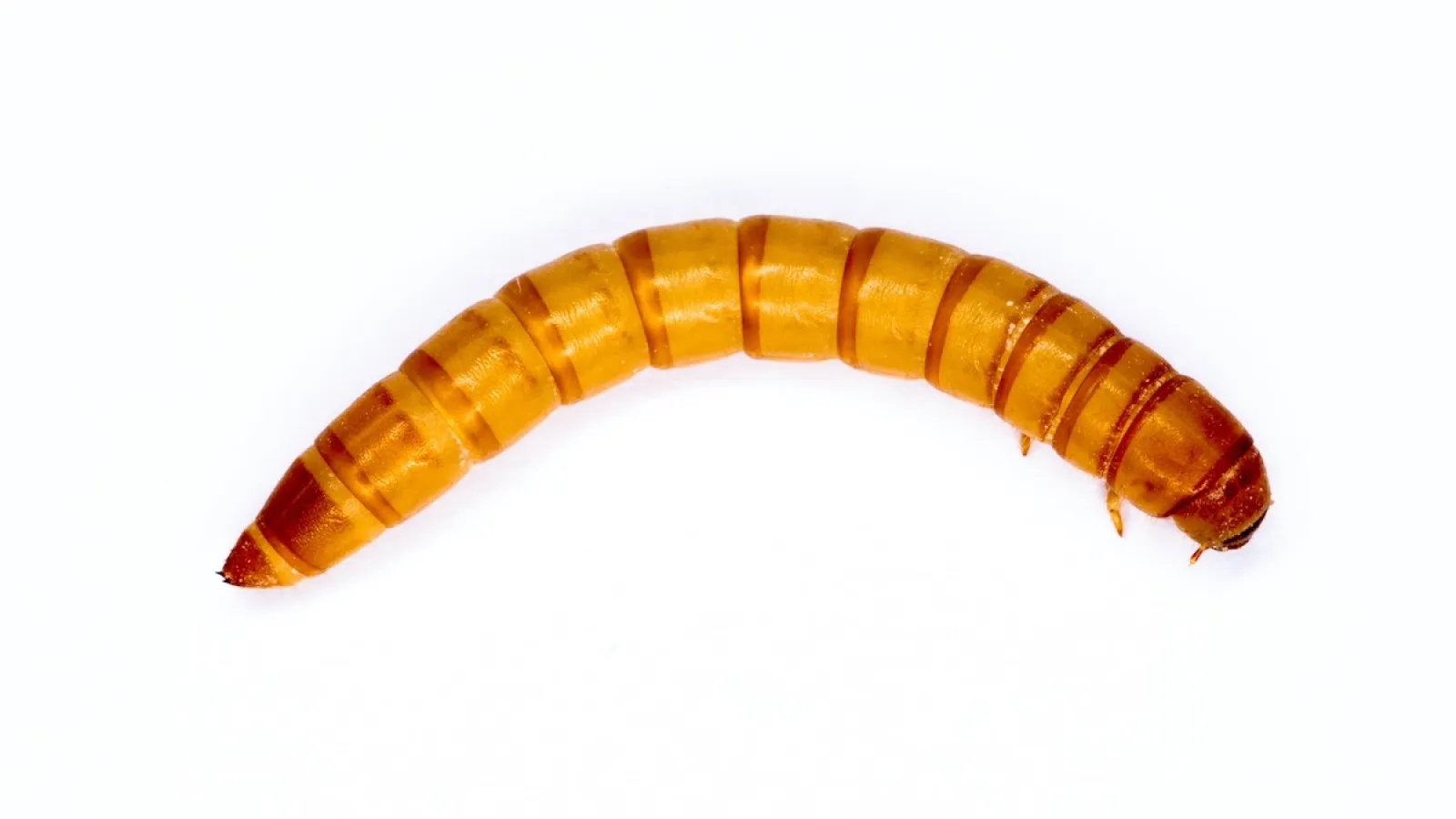
Yellow Mealworms
Yellow mealworms, as larvae, are typically cylindrical with yellow/brownish coloring around the body. These pests are usually half an inch long, growing to be up to a full inch. As they age and mature, their exterior shell becomes harder. They also begin to look more like beetles and less worm-like over time.
Yellow mealworms typically appear in neglected areas of the house, often in spaces with high humidity. They especially like bagged items in kitchen pantries left unbothered for a while. Stored food that becomes damp or moldy is a hotspot for these creatures. A female mealworm will deposit eggs in grain products, which can lead to a bigger infestation.
The most common food sources include damp, decomposing, or moldy substances, such as dead insects, animal waste, or decayed stored grains. If you were to find mealworms in your pantry, they would likely be located in oatmeal, flour, or other dry products that typically are stored in large quantities. They will hide in damp, moist, and cool areas where food sources are located nearby.
There are several steps you can take to try and remove mealworms. Try to locate the source of food and shelter first. Be aware that these are likely old grain products in your pantry, especially items you haven't used in a while. Sometimes, simply vacuuming to remove bait or throwing away food sources may be enough to remove mealworms. However, you may experience the problem again if they find ways to enter your home. In this case, contacting a professional will be the most beneficial way to eliminate the source.
Yellow mealworms indicate unsanitary conditions in your home and must be addressed quickly. They contaminate potential food sources, and although they are not a direct threat to humans, they still require immediate attention. If you suspect a mealworm infestation in your home, contact us for help. We have effective treatment programs to help stop the infestation at the source and prevent future ones from happening.
Similar Pests: Millipedes, Centipedes